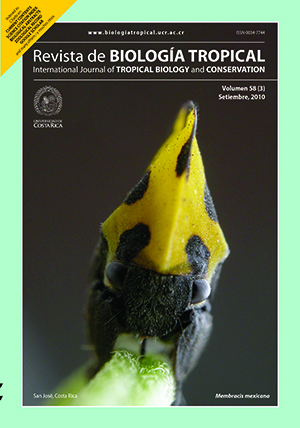Abstract
In tropical forests, wild game meat represents an option or the only protein source for some human populations. This study analyzed the wildlife meat trade destined to human consumption in an open market of the Amazon rainforest, Brazil. Wildlife meat trade was monitored during 2005 through interviews to vendors and consumers in order to evaluate the socioeconomic profile of the sellers, the main species and byproducts sold, their geographical origin, commercial value, frequency of sale and product demand. Data indicated that vendors were financially highly dependant of this activity, getting a monthly income up to US$271.49. During the survey, the amount of wildlife meat on sale added a total of 5 970kg, as follows: 63.2% capybara (Hydrochoerus hydrochaeris), 34.4% cayman (Melanosuchus niger and/or Caiman crocodilus crocodilus), 1.1% paca (Cuniculus paca); 0.6% armadillo (Dasypus novemcinctus), 0.5% deer (Mazama americana), 0.2% matamata (Chelus fimbriatus), and 0.1% opossum (Didelphis marsupialis). Most of the commercialized species were not slaughtered locally. The consumption of wildlife meat was admitted by 94% of the interviewed, consisting of 27 ethno-species: 19 mammals, 6 reptiles, and 2 birds. The same percentage of the interviewed (94%) already bought wildlife meat of 18 species: 12 mammals and 6 reptiles. The great amount of wildlife meat traded and the important demand for these products by the local population, point out the necessity to adopt policies for a sustainable management of cinegetic species, guaranteeing the conservation of the environment, the improvement of living standards, and the maintenance of the local culture. Rev. Biol. Trop. 58 (3): 1079-1088. Epub 2010 September 01.Comments

This work is licensed under a Creative Commons Attribution 4.0 International License.
Copyright (c) 2010 Revista de Biología Tropical
Downloads
Download data is not yet available.






